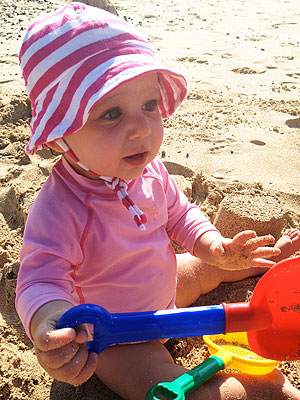10:20 P.M. |Video Highlights of Armstrong’s Confession
Now that the broadcast is over, the Oprah Winfrey Network has posted highlights on its YouTube channel.
Lance Armstrong on his “most humbling moment.”
Lance Armstrong on what he was thinking when he attacked his critics for telling the truth.
“If you’re asking me if I want to compete again? The answer’s, Hell yes.”
Lance Armstrong argued that his punishment was “a death penalty.”
Lance Armstrong on talking to his children about his cheating.
That concludes our live-blog coverage of Lance Armstrong’s confession. Thanks for joining us and thanks to all of the bloggers and journalists whose Twitter commentary we quoted.
— Robert Mackey
10:09 P.M. |A More Emotional Interview
More than Part 1, the second part of the interview felt like the old Oprah Winfrey show. Among the questions Winfrey asked Armstrong in the final 10 minutes of the interview:
“Will you rise again? Are you a better human being? What is the moral of the story?”
The answers: “I don’t know.” “Without a doubt. “I don’t have a great answer.”
O.K., Armstrong said more than that:
“I do not know the outcome here and I’m getting comfortable with that. That would have driven me crazy in the past.”
“I am deeply sorry for what I did. I can say that thousands of times and it may never be enough.”
“When I was diagnosed, I was a better human being after that. And I was a smarter human being after that. And then I lost my way. Here’s the second time. And it’s easy to sit here and say I feel different, I feel smarter, I feel like a better man today, but I can’t lose my way again. And only I can control that.”
“The ultimate crime is the betrayal of these people that supported me and believed in me and they got lied to.”
Winfrey even ended the interview by repeating what Kristin Armstrong told her ex-husband in 2009: “The truth will set you free.” That’s the Oprah many people expected when the interview was announced.
— Naila-Jean Meyers
10:04 P.M. |The Financial Implications of the Truth
Clarification was needed when Oprah asked him the financial toll of his demise.
“Have you lost everything?” she asked.
He would say only that he lost $75 million in future income.
”Gone,” he said, “and probably never coming back.”
But it would be wrong to imply that he is without money. The bigger question is not about lost earnings but what he believes he will lose.
What has he paid lawyers? What does he estimate that will pay in potential civil liability or settlements? What does he have to give back to sponsors? Oprah let Armstrong control the narrative.
One more point: did it seem to everyone that Armstrong never uncrossed his legs for the entire two and a half hours he talked to Oprah?
— Richard Sandomir
10:02 P.M. |A Shifting Account of the Impact on Cancer
Tonight Armstrong is saying that following his cancer diagnoses “I was a better human being after that, I was a smarter human being after that.” Last night, however, he said that his recovery from cancer turned him into a no-holds-barred, win-at-all-costs hyper-competitor. Given that he’s now comparing his current situation to the cancer diagnoses, what does this all mean?
— Ian Austen and Juliet Macur
9:52 P.M. |How Editing Changes Impressions
The previous segment saw Lance Armstrong talking at length, and breaking down in tears, talking about his children. After the commercial break, a seemingly composed Armstrong was asked whether anyone on his team had paid off the United States Anti-Doping Agency. He said no.
But the change in tone of the interview was abrupt and odd. It makes me wonder about how the interview was edited.
— Naila-Jean Meyers
9:48 P.M. |Armstrong Chokes Up
Armstrong, in many ways, seems to be dictating this part of the interview. He’s asking a lot of questions of himself, and Winfrey is, again, not asking critical follow-ups.
When she asked, was there anybody who knew the whole truth? Armstrong said, “Yeah.” But Winfrey didn’t ask who.
Armstrong has been allowed to go on long narratives about his family, his children, his “process,” and change subjects without Winfrey asserting herself into the conversation.
Her silence, though, helped create what has so far been the most emotional part of the interview, Armstrong’s description of what he told his 13-year-old son, Luke, over the holidays about the case against him. “I told him not to defend me anymore,” Armstrong said after a long pause during which became choked up.
— Naila-Jean Meyers
Oprah opened up a significant door with Armstrong that Armstrong danced around and then shut: did people tell him to stop doping, stop the lying and, one assumes, stop steamrolling people who disagreed with him?
“Could they have done anything?” she asked.
“Probably not,” he said. But then, he detoured, with Oprah’s help, into discussing a conversation with his ex-wife, Kristin, about whether he should return to cycling from his retirement. She told him if he did it without doping and not to cross the line again.
He said that Kristin was “not curious,” and perhaps “did not want to know.”
Still, did Kristin, or anyone else, plead with him, intervene with him, tell him he’s a jerk? Right now, we don’t know. “I said, `You’ve got a deal,’ ” he said. Of course, others disagree that he did not use performance-enhancing drugs during his comeback in 2009 and ’10.
Oprah opened yet another area of inquiry when she asked Armstrong if he is in therapy; he said that he was and that he had been in therapy sporadically throughout his life but now needed to do more. But just like that, the door closed before any questions about whether therapy enabled him to confess his doping sins, even if his admissions have not satisfied everyone.
— Richard Sandomir
9:44 P.M. |On Losing the 2009 Edition of the Tour
Armstrong said he expected to win the 2009 Tour in his first year back from a several-year break. Finishing third was hard for him. He eventually rationalized that finish by saying he “just got beat” by two guys who were better than him. I would beg to disagree. Armstrong did everything he could to sabotage Alberto Contador’s victory that year, Contador has said. He left Contador stranded at the team hotel without a ride to the individual time trial. He also harassed Contador at team dinners, knowing full well that Contador, a Spaniard, could understand English. He also criticized Contador for attacking at the end of one mountaintop finish, but Contador later said he attacked because he thought his team was plotting against him.
— Juliet Macur
Oprah asked about the picture Armstrong posted on Twitter of him lying on his couch surrounded by framed yellow jerseys.
“That was another mistake,” he said.
Then Oprah basically laughed at him for showing such hubris, essentially saying, “What were you thinking?!??!”
“That was just more defiance,” he said.
— Naila-Jean Meyers
9:33 P.M. |A More Contrite Armstrong, but Questions Linger
Armstrong is sounding much, much more contrite than he was in Oprah Part 1 on Thursday. He said his lowest moment was cutting all ties with his charity and that he was in therapy now. He called it “sick” that he told a lawyer in sworn testimony in 2005 that he would never dope because it would disappoint the millions of cancer survivors who looked up to him. Yet he still said he deserved a six-month suspension, which is the punishment his teammates received when they came clean to the United States Anti-Doping Agency. The difference, though, is that those teammates came forward to tell the truth about their doping, while he kept his secrets for months and months more. (And most likely would have kept them forever if he had never been caught.)
Armstrong said his former wife, Kristin, believed in honesty and the truth. But at least one rider who testified in the United States Anti-Doping Agency case said Kristin was complicit in Armstrong’s doping. She allegedly handed out cortisone pills to riders at the 1998 world championships, prompting another rider to say, “Lance’s wife is handing out joints.” Armstrong said Kristin was only on a “need to know” basis regarding the drugs, but some of Armstrong’s teammates would disagree.
— Juliet Macur
9:31 P.M. |Armstrong Admits He Wants to Compete Again
As my colleague Juliet Macur reported two weeks ago, close associates said that he was considering making a confession “because he wants to persuade antidoping officials to restore his eligibility so he can resume his athletic career.”
In response to questions from Winfrey, Armstrong said that he did want to compete again and that was part of the reason he finally admitted cheating.
Armstrong was given a lifetime ban against competition after first attempted to use the courts to block the United States Anti-Doping Agency’s investigation of him and then, when that failed, he refused to participate in the process. The World Anti-Doping Agency, or WADA, has the power to amend that ban if he provides it with “substantial assistance.” But David Howman, its executive director, told me Friday that not only has Armstrong not done that yet, he hasn’t even contacted WADA.
Some observers of the interview who doubt Armstrong’s contention that he did not cheat during his comeback in 2009, when he continued to work with the infamous doping doctor Michele Ferrari, have suggested that he might be thinking of the statute of limitations, or presenting a case that his ban should be shorter and back-dated to 2005.
Armstrong continues to assert that he didn’t dope during his post retirement Tours de France. Here’s the conclusion of the United States Anti-doping Agency: “Armstrong’s Blood Test Results During the 2009 and 2010 Tours de France are Consistent with His Continued Use of Blood Doping.”
After Thursday’s broadcast, antidoping officials were clear. “If Mr. Armstrong truly wants to make amends for his doping past, then he needs to make a full confession under oath to the relevant anti-doping authorities,” the World Anti-Doping Agency said.
The U.S. Anti-Doping Agency added: “His admission that he doped throughout his career is a small step in the right direction. But if he is sincere in his desire to correct his past mistakes, he will testify under oath about the full extent of his doping activities.”
— Robert Mackey and Ian Austen
9:22 P.M. |Oprah Presses for an Emotional Reaction
Oprah’s first question was: What was the humbling moment that brought you face to face with yourself?
Armstrong began talking about when his sponsors, starting with Nike, bailed out. He knew then that he was losing control of the story. But the most humbling moment came later:
“The one person I didn’t think would leave was the foundation,” Armstrong said. “And that was the most humbling moment.”
Calling the foundation his “sixth child,” he said that stepping aside from the foundation was “the lowest point.”
Armstrong said that he wasn’t forced out but was aware of the pressure and that it was the best thing for the organization that he leave.
After watching the clip of his 2005 deposition, Armstrong said, “I don’t like that guy.”
Winfrey followed up by asking, “Who is that guy?”
“That is a guy who felt invincible, was told he was invincible, truly believed he was invincible,” Armstrong said.
He conceded: “That guy’s still there. I’m not going to lie to you.”
He also talked more about apologies, and when Winfrey asked what he would say to the millions of people who supported him, Armstrong said: “I understand your anger, your sense of betrayal. You supported me forever through all of this, you believed, and I lied to you. And I’m sorry. I will spend — and I’m committed to spend — as long as I have to make amends.”
(And “process” continues to be Armstrong’s favorite word in this interview.)
— Naila-Jean Meyers
9:19 P.M. |Did Armstrong’s Doping Cause His Cancer?
Winfrey finally asked Armstrong the question that many people have been wondering: If he thought his doping had caused his testicular cancer. She asked if he thought it did. He said no. And that was it! Winfrey, obviously, should have pushed him on that and asked why he doped even after cancer nearly killed him.
— Juliet Macur
9:16 P.M. |Armstrong’s Lowest Point: Leaving Livestrong
Armstrong told Winfrey his lowest moment of his doping scandal: leaving his charity, Livestrong, behind. He said Livestrong had asked him to step down as chairman last fall, then weeks later asked him to cut all ties. He said he wasn’t forced out or told to leave. But that walking away from it “hurt the most.” The charity needed to distance itself from him because it was losing support, two people with knowledge of the situation said. Corporate sponsors were pulling their support or cutting their support in the aftermath of Armstrong’s scandal.
During the interview, Winfrey asked Armstrong to watch video of his own sworn testimony in 2005, when he said that the reason he would never dope was that he would lose “the faith of all of the cancer survivors around the world.” He added: “It’s not about the money for me — everything — it’s also about the faith that people have put in me over the years. So all of that would be erased. So I don’t need it to say in a contract, ‘You’re fired if you test positive.’ That’s not as important as losing the support of hundreds of millions of people.”
Part of Lance Armstrong’s deposition in a 2005 suit against SCA Promotions, a firm that had promised to pay him a huge bonus for winning the Tour de France five straight times.
— Juliet Macur and Robert Mackey
9:06 P.M. |What Did Armstrong Tell His Children?
Oprah Winfrey did ask several of the questions that my colleague Juliet Macur suggested the other day, but based on the promos for Part 2, Winfrey will be asking about Armstrong’s children.
To refresh your memory, here is what Juliet suggested Oprah ask about Lance’s children:
When you briefly retired from cycling after winning the 2005 Tour, you said you did so to spend time with your children and be a better father. Do your five children, ages 2 to 13, know about your doping past? If so, when and how did you tell them?
— Naila-Jean Meyers
9:03 P.M. |LeMond Gets In a Dig
Greg LeMond, the only American winner of the Tour de France not to be later stripped of the title for cheating, was at odds with Lance Armstrong for more than a decade over suspicions that the Texan had doped.
On Thursday, he reminded readers of his Twitter feed of one of Armstrong’s most adamant declarations that he never doped: a Nike commercial in which he declared that all he was “on” was his bike, six hours a day.
Writing on Twitter, LeMond made a puckish referee to that ad in a message drawing attention to his own latest product, a LeMond Revolution cycling trainer.
— Robert Mackey
8:55 P.M. |Annals of Great Televised Confessions
While we are waiting for Lance Armstrong to complete the confession of all confessions, let us revisit some memorable occasions from the past when public figures went on television to express remorse (or not) for things they did.
Who could forget Bill Clinton’s humiliating declaration that oops, he had in fact had an inappropriate relationship with “that woman … Miss Lewinsky” after all?
Or Mark Sanford’s ragged, rambling confession that “hiking the Appalachian Trail” had nothing to do with hiking, or even with Appalachia, and everything to do with his South American mistress?
Or the excruciating spectacle of a squirming Tiger Woods owning up to “irresponsible and selfish behavior” after being exposed as a serial philanderer and sender of unsavory hook-up texts?
Then there was Anthony Weiner’s teary confession that he had for some horrifying reason posted on Twitter a photograph of his underpants (with him inside them) and then lied about it.
There are many more, obviously: this is a great American ritual, the televised confession and plea for forgiveness. But the most interesting one in recent years, to my mind, was David Letterman’s extraordinary admission, in a long, often ruefully funny, monologue in 2009 that seemed to be a brilliant shaggy-dog story until it wasn’t, that he had slept with women on his staff. (He revisited the issue the following week, when he apologized to his staff and to his wife, Regina).
— Sarah Lyall
8:51 P.M. |What About the Ratings?
The question on the minds of media types Friday night is: how well will Part 2 of Winfrey’s interview fare?
Part 1 of her sit-down with Armstrong attracted about 3.2 million viewers to OWN. Another 1.1 million watched a repeat of the interview, for a total of 4.3 million for the night. While great for OWN, many executives and producers at other networks thought Armstrong’s confession would draw a bigger total audience.
Maybe the public knew enough from the leaks ahead of time (namely, that Armstrong was certain to confess) or maybe he wasn’t an appealing enough figure to spend 90 minutes with (he didn’t show all that much remorse to Winfrey, some said). Maybe they just wanted to watch “American Idol” instead. Regardless, Armstrong’s messages were seen and heard by a much bigger audience than the one that tuned into OWN — his story blanketed television newscasts on Thursday night and Friday morning.
Typically Friday nights are much lower-rated than Thursday nights across the American TV universe. But OWN is hoping to draw in millions of people for Part 2. The early ratings will be available as early as Saturday.
— Brian Stelter
8:34 P.M. |Color Victims of Armstrong’s Bullying Unimpressed
As my colleague Ian Austen reported, among the viewers of Thursday’s broadcast who came away less than impressed by Lance Armstrong’s limited confession were several members of the professional cycling community he attacked after they testified to his doping over the years.
One was the Italian cyclist Filippo Simeoni, who angered Armstrong by testifying against the doping doctor both had been clients of, Michele Ferrari. Armstrong took his revenge by using his position as leader of the 2004 Tour de France to intimidate other riders into agreeing to block Simeoni from competing for a stage win.
Two women who were once part of Armstrong’s inner circle, Emma O’Reilly, his former masseuse, and Betsy Andreu, the wife of a former teammate, both told the Irish journalist David Walsh that the American champion had cheated. In part of his sworn testimony in a 2005 lawsuit, Armstrong denied the allegations made by both women and attacked their characters.
Part of Lance Armstrong’s deposition in a 2005 suit against SCA Promotions, a firm that tried not to pay him a huge bonus for winning the Tour de France because of allegations that he had cheated to win.
In the part of the interview broadcast on Thursday night, Armstrong said that he had tried to apologize to both women. He confirmed that he had lied under oath in denying O’Reilly’s account of how he managed to get out of a failed drug test after the very first stage of his first Tour win in 1999, but he refused to address Andreu’s contention that he had acknowledged using drugs in 1996 to doctors treating him for cancer.
Lance Armstrong admitting to Oprah Winfrey that he attacked critics who told the truth about his doping.
On Friday, O’Reilly responded by saying that it was too late for apologies and called him a “little runt” on British television.
Emma O’Reilly, Lance Armstrong’s former masseuse, on British television on Friday.
As my colleague Juliet Macur reported, Andreu reacted with anger on CNN minutes after the conclusion of Thursday’s night’s broadcast of Armstrong’s interview with Oprah Winfrey.
Armstrong’s almost casual admission that he had, in fact, attempted to assassinate the characters of O’Reilly and Betsy Andreu were one of Thursday’s low points for some of his critics.
Two cyclists who admitted to doping during their careers but are leading a movement to reform the sport through better testing and a team committed to clean riding, Jonathan Vaughters and David Miller, responded to Armstrong’s confession in different ways. Vaughters called the admissions a good start, albeit one that Armstrong needed to back up by coming clean in real detail to the proper authorities.
Millar, who was in Spain working with antidoping authorities, pointed readers of his Twitter feed to a fierce destruction of Armstrong’s character by the ESPN writer Bonnie Ford.
The South African sports physiologists who run the Science of Sports blog drew attention to what they said was evidence that Armstrong lied to Winfrey about not doping during his aborted comeback to the sport in 2009.
— Robert Mackey
















